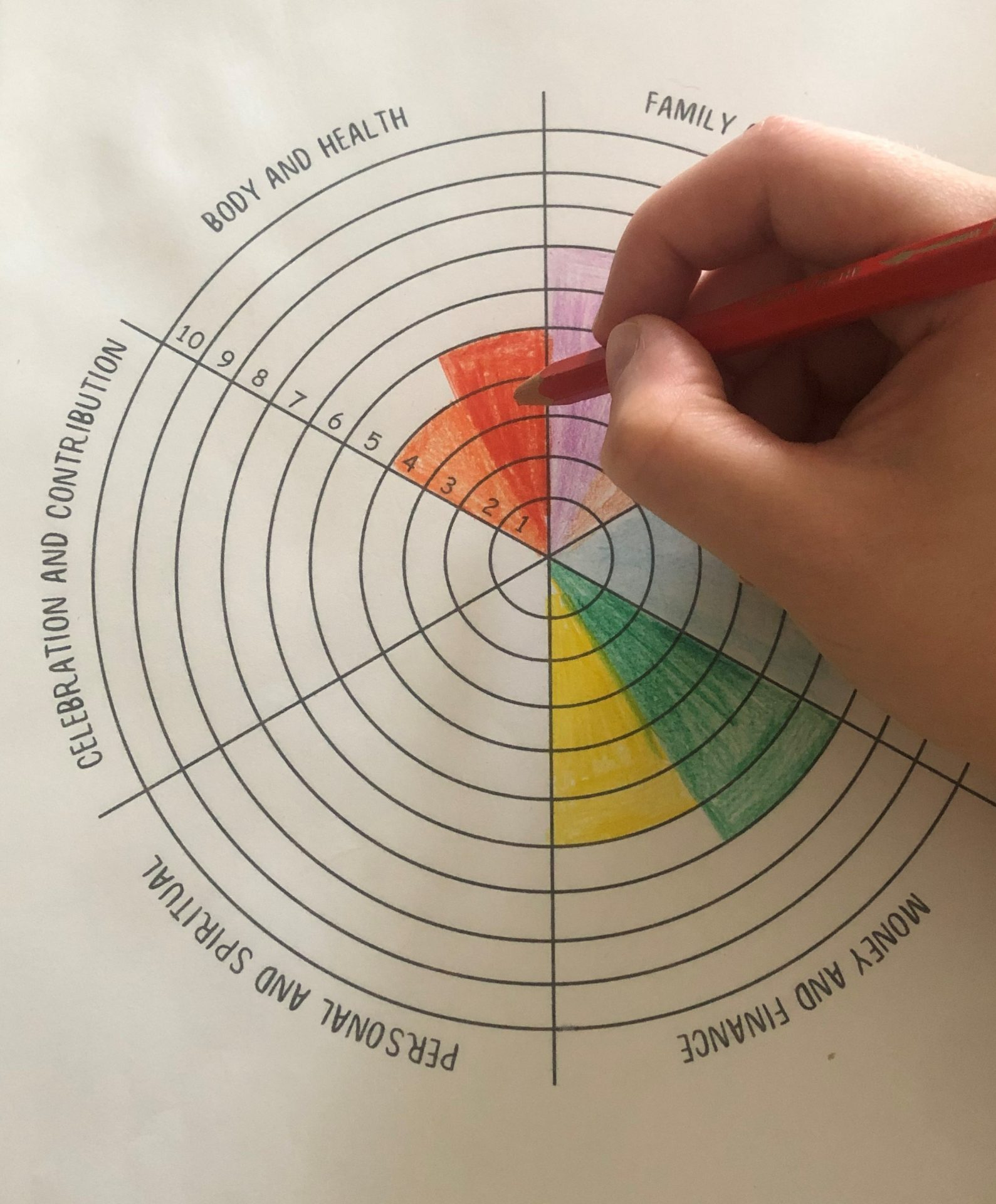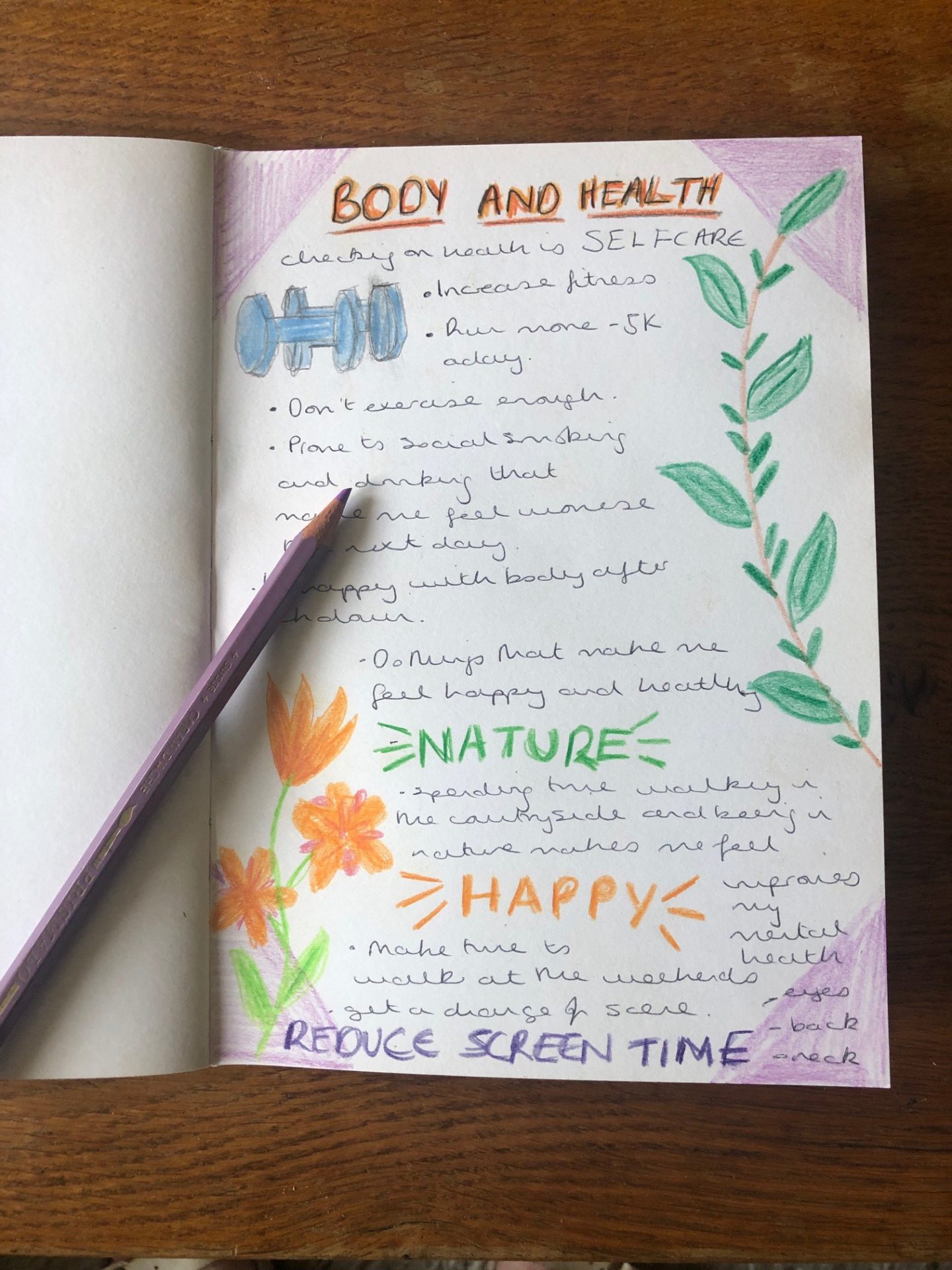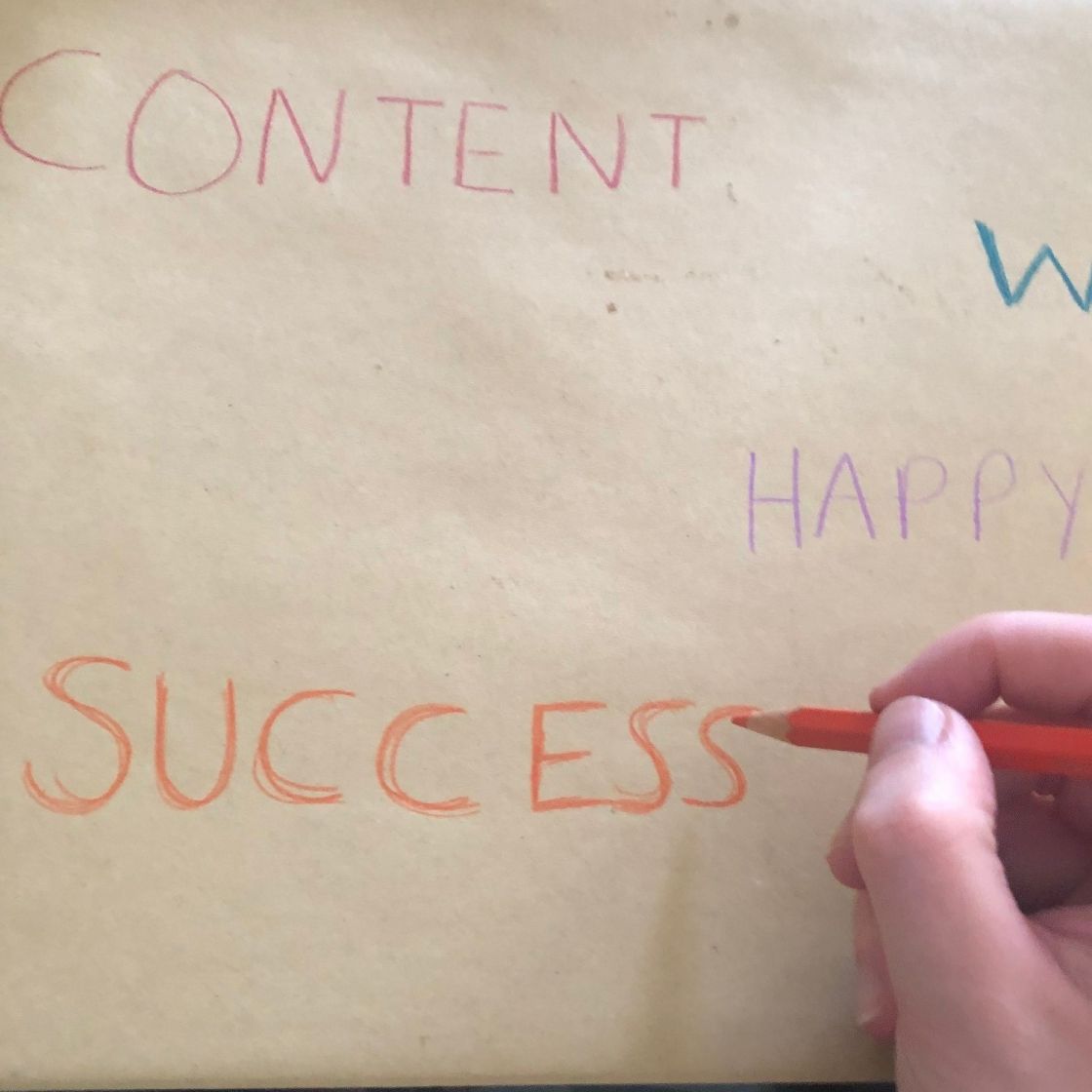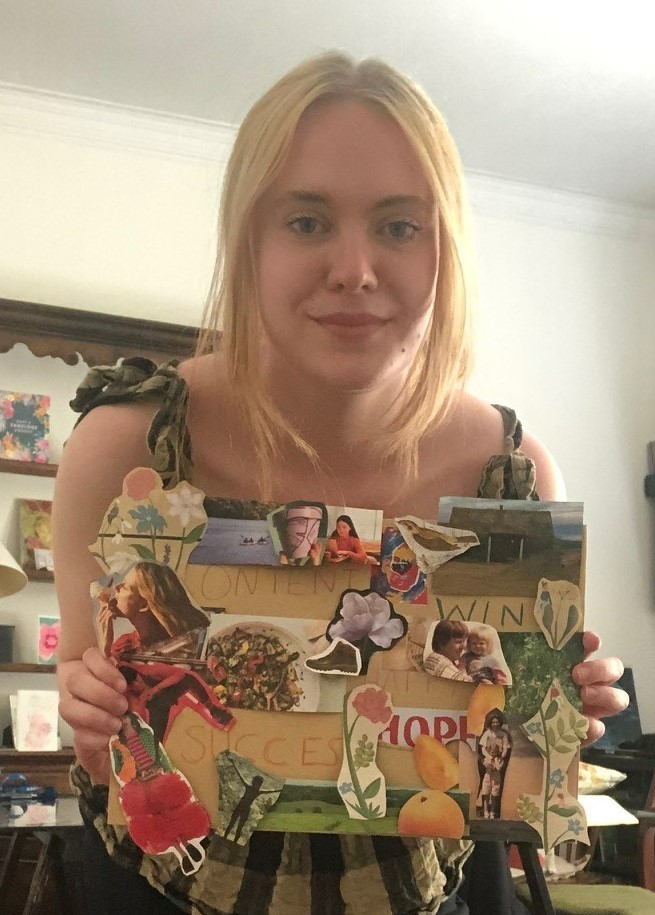“This vision board masterclass has completely transformed the way I look at my life goals”

Creative journaling and making vision boards can help us to set goals and achieve what we want out of life. Here, editor Alex Sims tries The Curiosity Academy’s vision board masterclass to see if it can help her overcome her post-lockdown languishing.
Welcome to The Curiosity Academy, Stylist’s new learning hub where you can access workshops, how-to guides, new research and learn the most up-to-date skills from the UK’s most in-the-know people.
Like most people, when the UK went into lockdown at the end of March last year my life changed drastically. In the space of a few days, I went from having a busy social life and a bustling work schedule to being cooped up in my flat with Zoom for company.
Working from home, cancelling holiday plans and not being able to meet up with my friends brought a whole new cocktail of emotions bubbling to the surface. The most intense feeling was an overriding sense of stagnancy, like my life had been put on hold.
As it turns out, I haven’t been the only person weighed down by stasis. Languishing has become the new buzzword for describing our mental health post-lockdown. First coined back in 2010, it’s re-emerged, to sum up the lack of drive and motivation many of us have felt throughout the pandemic.
In an effort to lift myself out of this monotony, I’ve decided to take Rosemary Ikpeme’s Curiosity Academy class exploring how to use creative journaling and vision boards to set goals and get what you want out of life –just the thing I need right now.
“Mind mapping a vision board helps you navigate your daily challenges,” says Rosemary, who is the founder of MYnd Map, an independent brand specialising in mindfulness, gratitude, and goals-setting journals, planners, and agendas. “It helps you focus and achieve your goals in areas such as self-care, mental health and relationships.”
Visualisation has been used for decades by successful athletes, celebrities and entrepreneurs to help build them up for success. It works by thinking of an outcome you want to see in your life and visualising it in your mind as if it’s already happened. Bernardine Evaristo famously visualised herself winning the Booker Prize years before she became the first Black British author to win the coveted literary award in 2019. Footballers also use the technique to visualise themselves scoring goals and give them confidence on the pitch.
The idea is that our brain follows the same patterns when we visualise something as it does when we actually perform an action. It sets us up to achieve our desired outcomes by sticking them into our subconscious. Making a vision board means you have a tangible reminder of your goals that you can keep looking back at to keep you motivated to achieve them.
Our brain follows the same patterns when we visualise something as it does when we actually perform an action
Creating a ‘Wheel of Life’
Rosemary’s workshop is broken down into three sections, the first of which takes us through the process of creating something called a ‘Wheel of Life’ to examine our current feelings.
The ‘Wheel of Life’ is a visual tool that enables people to take stock of their thoughts and analyse how the different areas of their lives work in tandem with one another.
Using a worksheet created by Rosemary, I start looking closely at six different areas of my life, from my mental and physical health to my money and finance.
The wheel gives each area of life a possible score out of 10. If I feel completely satisfied in a certain area I’m asked to fill all 10 sections with colour. If I feel dissatisfied, I colour in a low number of sections or leave all the sections blank.
The repetitive motion of colouring in really helps me focus on how I’m feeling right now and I end up with a neat, bird’s eye view of my life.
Immediately, I’m able to ask questions like, ‘Am I celebrating myself properly when I achieve small successes?’, ‘Am I making time to look at my finances?’ and ‘Am I letting my work-life overtake how much I interact with my family?’
Not only has it got me thinking, but it’s also a calming, meditative and fun way to take time for myself.
I end up with a neat, bird’s eye view of my life
Creative journaling
The next step is to journal down what the ‘Wheel of Life’ has revealed for me and what changes I want to start making in my life.
With Rosemary’s guidance, I grab a notepad and let my thoughts flow across the pages. “Let your thoughts just come out, so you don’t have time to compare yourself to society’s view of success, only your version of success,” says Rosemary.
When thoughts don’t come immediately to mind, I turn to doodles and colours. Without overanalysing it, I realise that, when it comes to my mental and physical health, I’m drawn to adventure and the natural world. When it comes to considering my contributions and celebrations, I’m drawn to my friends and how much I value them.
Creating a vision board
After setting out my feelings and looking at what I want to change in each area of my life, the third action is to set out my life goals on a vision board.
Rosemary instructs me to find a large piece of paper (I use the back of a large envelope) and start writing out feelings that I want to achieve. For me, ‘contentment’, ‘happiness’ and ‘success’ come to mind and I scribble each one down in colourful cartoon letters.
“This isn’t a work of art,” says Rosemary, as she warns us not to overthink what we add to our boards. “Enjoy the process and it will all unravel the way it should.”
Now, I begin to visualise my feelings and goals through images, pictures and colours. I start by looking through old papers and magazines and cutting out the ones I’m most drawn towards.
In a world where we are constantly comparing ourselves to others, the vision board is a map of what I really want from life
Almost absent-mindedly, I start messily cutting out pictures and sticking them haphazardly around the feelings I wrote down earlier. From the chaos, I begin to see distinct patterns that really illuminate what I want to achieve in life. I see that I’m drawn to images of adventure – I pick out a picture of people kayaking through the Lake District and a woman flinging open her arms in celebration on top of a mountain.
Subconsciously, I’ve also been drawn to pictures of women who imbue a sense of carefree confidence, decked out in clashing patterns and colours, or people delighting in simple pleasures like licking ice cream.
In a world where we are constantly comparing ourselves to others, the vision board I see in front of me is a map of my own subconscious telling me what I really want from life – it’s surprising and clarifying.
Taking action
“To make sure these goals go from being visions to reality, you need to take action,” says Rosemary.
She gives us a task: “Look at your vision board and decide what action you can take within a month to get close to it. What action can you take within a week and what action can you take right now?”
I look at my vision board and remember why I set out to create it in the first place. I pull on my gym kit, go to the park and launch into my first run since the beginning of the pandemic. No more languishing for me.
Want to make your own vision board? Join Rosemary Ikpeme’s class ‘How to make your dreams a reality with vision boards’ on The Curiosity Academy now.
Source: Read Full Article



